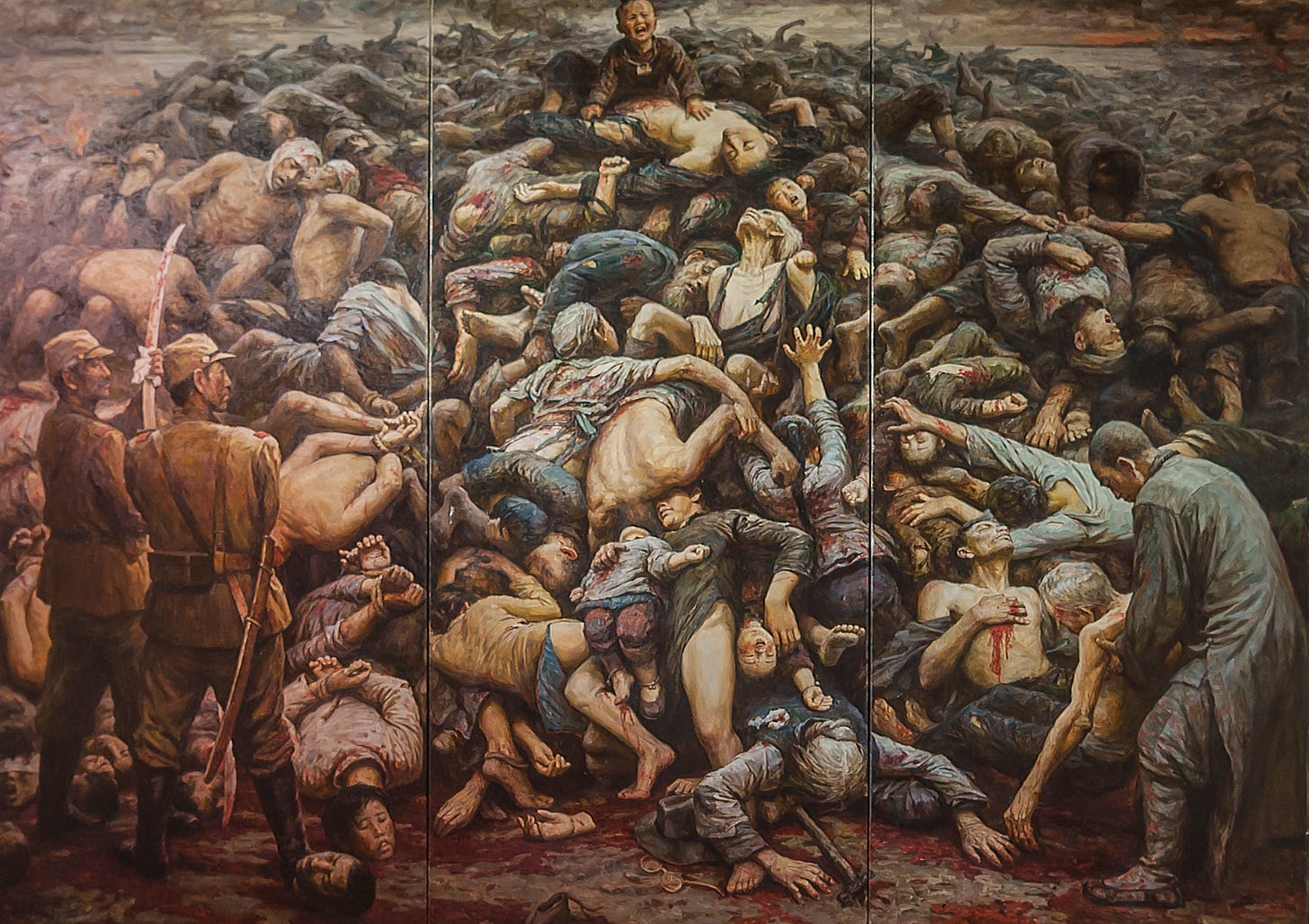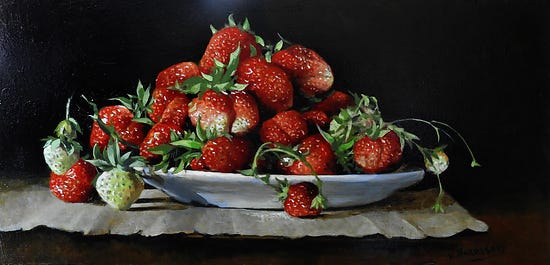Beauty and Sublimeness
Two Elements of True Art That Honor the Soul of Humanity
This article originally appeared on my personal Substack, Clinsights as here.
Editor’s Note: In two days, this post will be locked and is available only to paid members because we don’t want this duplicate content on the open web in a way that might draw traffic away from the original post. You can always read the entire post here.
We are sharing this essay in The BoldBrush Letter because the underlying idea applies to all artists. Please enjoy.
Beauty and Sublimeness
It is my belief that true Art depicts Beauty, Transcendent Beauty.
It is not prettiness or attractiveness that defines Beauty, but the ability to open us to the divine mystery.
You may, in your Art, choose to depict “ordinary” beauty, such as a sunset, an attractive woman, or a story or song about falling in love. Those subjects are, of course, beautiful, especially when done with seriousness that avoids kitsch.
But, we Artists also excel at sharing the hope contained within deeper portrayals of Beauty: The old man with his smiling laughter lines, the little boy playing in the sand, the story of someone rejecting the plastic “beauty” messages of the world to pursue the dreams of her heart.
The true artist communicates resonate beauty and hope, even when portraying suffering and ugliness. In such cases the beauty is felt in the viewer’s heart, in heartbreaking empathy, in indignant anger, in resolve to change injustice, or in recognition of every person’s nobility.
In extreme cases, Beauty is present through the deafening silence of its absence. Our heart breaks at seeing the beautiful souls of the divine human being treated worse than animals. When done well, the Truth of Beauty in our hearts cries out against cruelty’s injustice, such as in paintings of the rape of Nanking, those that depict the plight of holocaust victims or in works that remind us, while not glorifying it, of the hell of modernity.
This attempt to awaken the beautiful soul of the viewer by shocking them with man’s inhumanity to man, with ugliness, when presented as a heart-felt lamentation; when decrying the desecration of human souls was, I think, the original goal of modern art. Sadly, it later, itself, became corrupted and turned not into decrying desecration of the Beautiful, but started instead to celebrate the desecration.
Another way to portray “beauty in ugliness” is through Art that depicts the nobility of the human being, even in the worst of circumstances. The Beggar by Max Ginsburg depicts a homeless man, shirtless, with his hand out and yet, his smile indicates not only is he not broken, but that, in fact, he can still find joy in his heart.
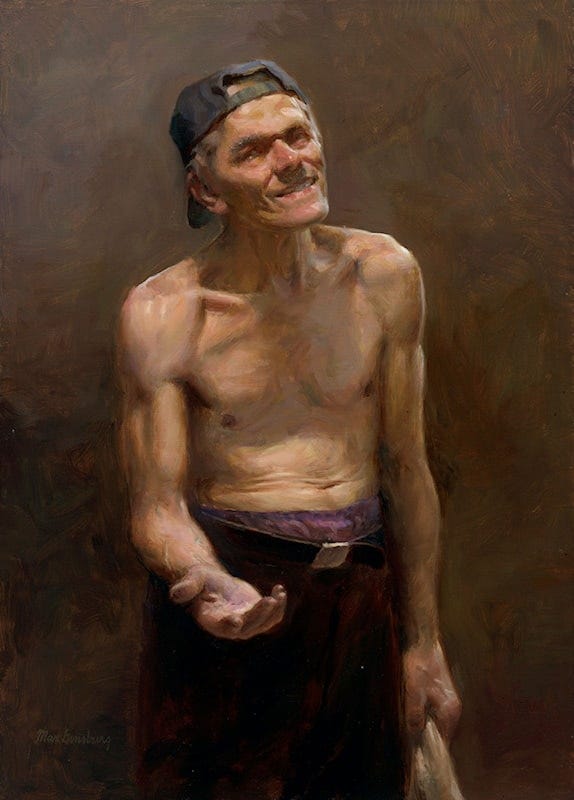
Therefore, don’t think that you must shy away from weighty subjects that address the problems of this world to depict hope and beauty; for it is the job of us artists to shine the light of Truth into these terrifying corners that most people ignore.
It is only when we attempt to normalize or propagandize humanity’s cruel animalistic side that we’ve abandoned Beauty and gone over to the other side. It is only when we forget souls that we’ve joined the evil cult of ugliness that surrounds us.
It is when we reduce a human being’s body, with our “art,” from an embodied soul to an empty vessel that may be used for some utility, that we’ve abandoned art.
The Beautiful nude celebrates the divineness of the soul of the person depicted, while the pornographic denies the soul and invites you to fantasize about using the body depicted as you see fit. The Beautiful serves God and the pornographic serves you.
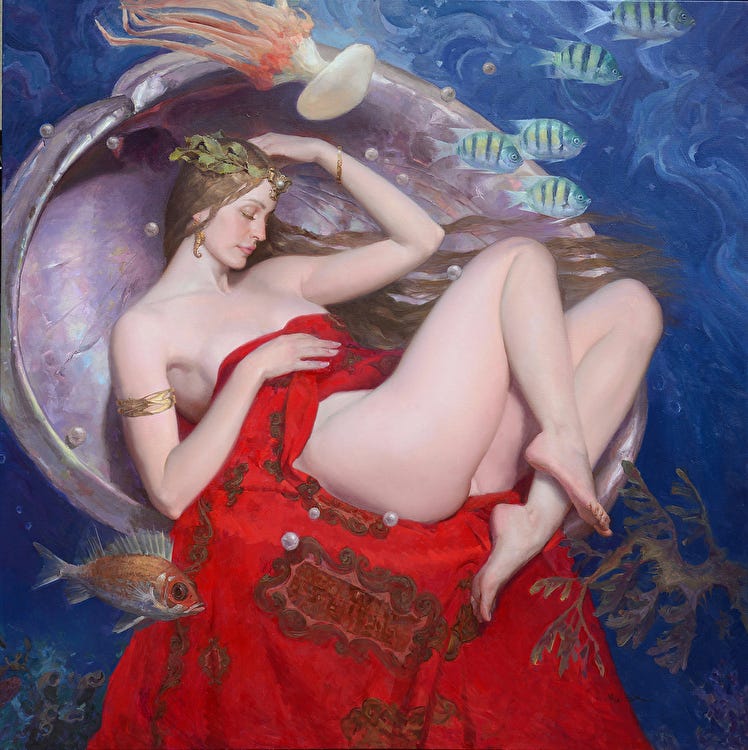
Even fearful subjects, or those that make us feel insignificant, depicted in a way that recognizes the soul of humanity, and the truth of our condition, evoke Sublimeness, which we may consider Beauty’s wild and unpredictable twin sister.
Beauty and Sublimeness serve similar purposes, though Beauty evokes wonder through love while sublimeness kindles similar feelings through awe, fear and even terror. But they both point to something bigger beyond. They both remind us of the transcendent kingdom of true reality and; therefore, I include sublimeness in my definition of “Transcendent Beauty.”
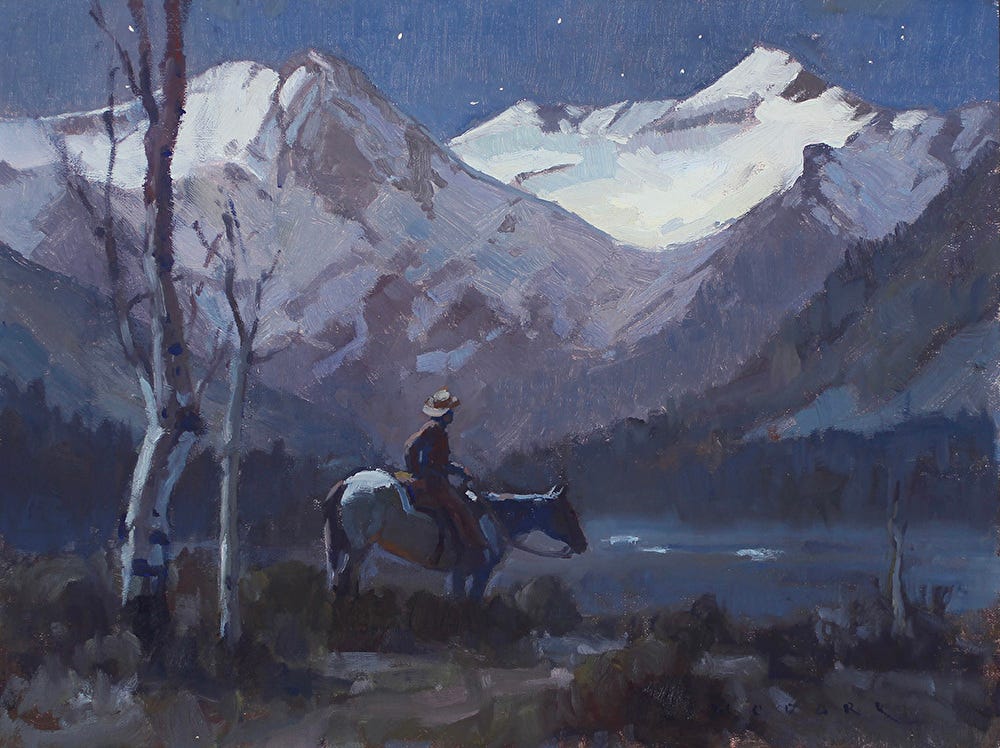
Seeing, hearing, and sharing the healing transcendent Beauty, in which we all swim, is the job of the Artist. This re-cognition of our divinity, our Beauty, is one reason Art brings hope.
And it is the reason Art can save us.
Beauty will save the world. — Fyodor Dostoevsky
PS - This reflection is an excerpt from my forthcoming book The Sovereign Artist: The Liberating Power of the Creative Act. If that is of interest to you, I encourage you to join the waitlist.
FASO Loves Victor Mordasov’s oil paintings!
See More of Victor Mordasov’s art by clicking here.
Wouldn’t You Love to work with a website hosting company that actually promotes their artists?
As you can see, at FASO, we actually do, and,
we are the only website host we know of that does.
Click the button below to start working
with an art website host that actually cares about art.
No AI Zone: Everything written in this post (and all my posts) is written 100% by me, Clint “Clintavo” Watson, a flesh and blood human seeking to grow my soul and come home my truest self; for that is the essence of creativity. I do not use AI to assist me with writing — that would deny me the very growth of my world through writing that I seek.
I only rarely use AI images with my (non-AI) writing. On the rare occasions I do use an AI image (usually fiction), I also feature at least one artwork by a human artist with image credits and links to their work or, if I can’t find a suitable image, I donate a free month of website service to one of our artist customers at my SaaS company, FASO Artist Websites.


